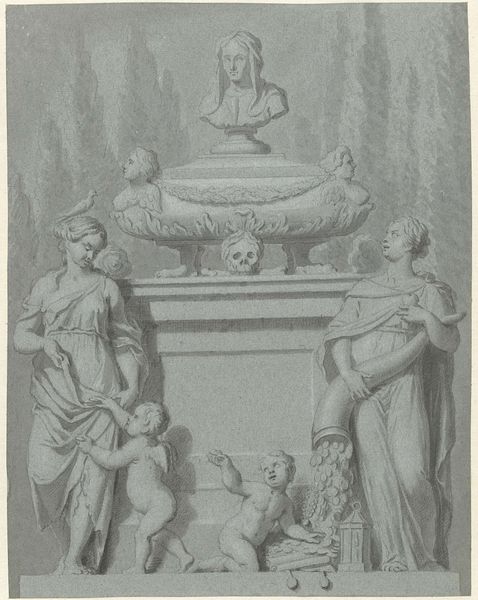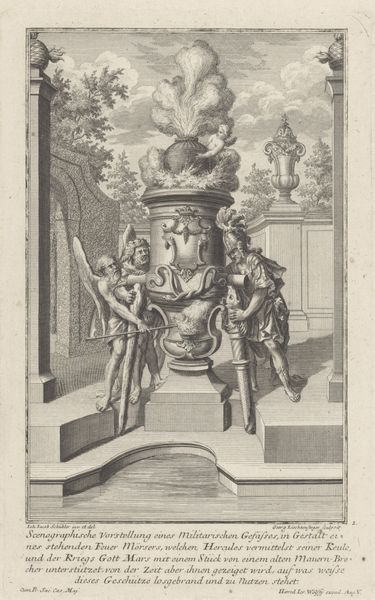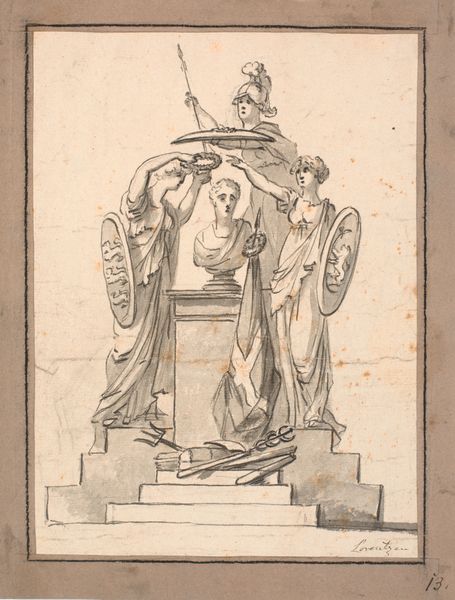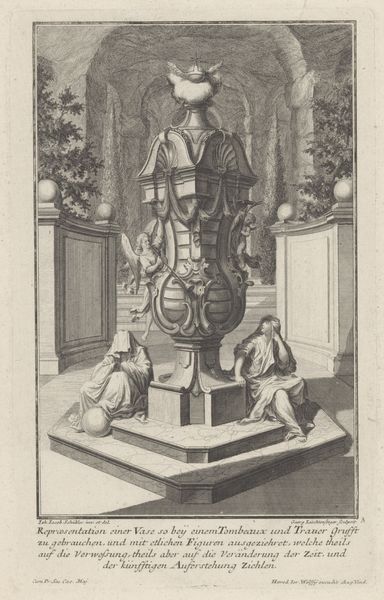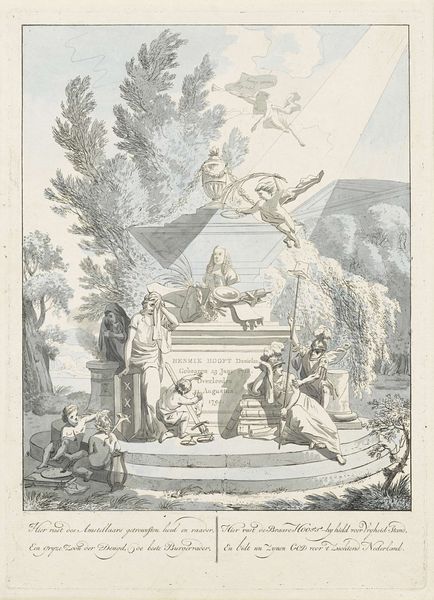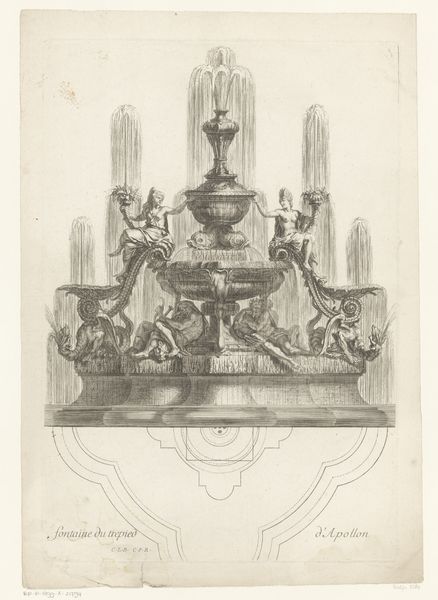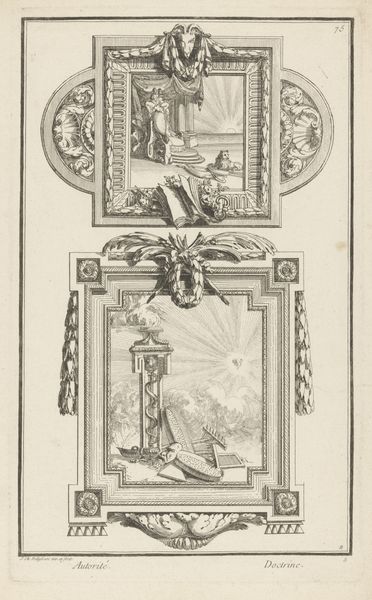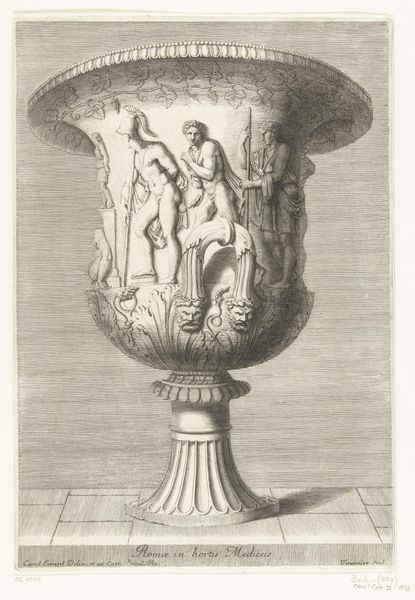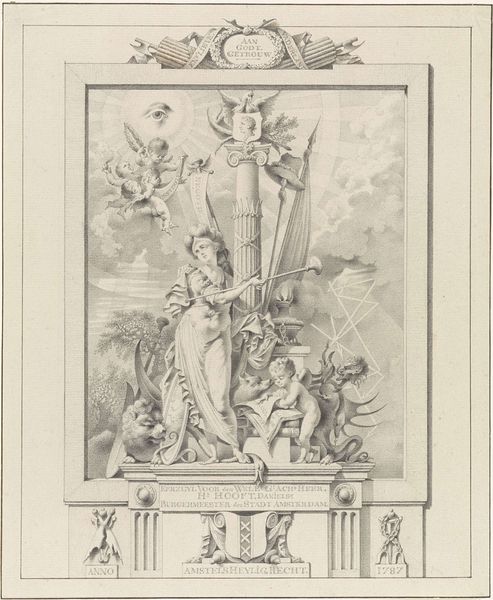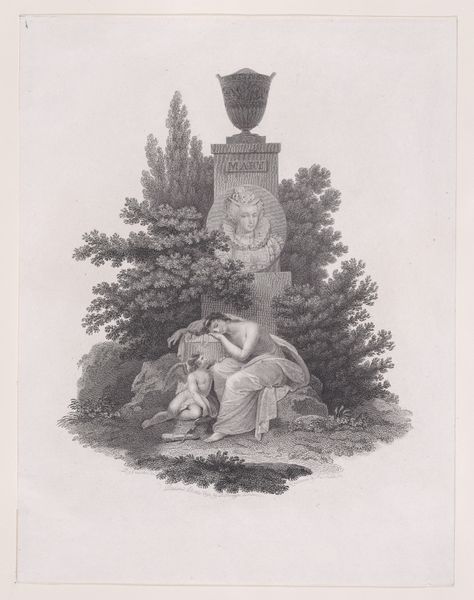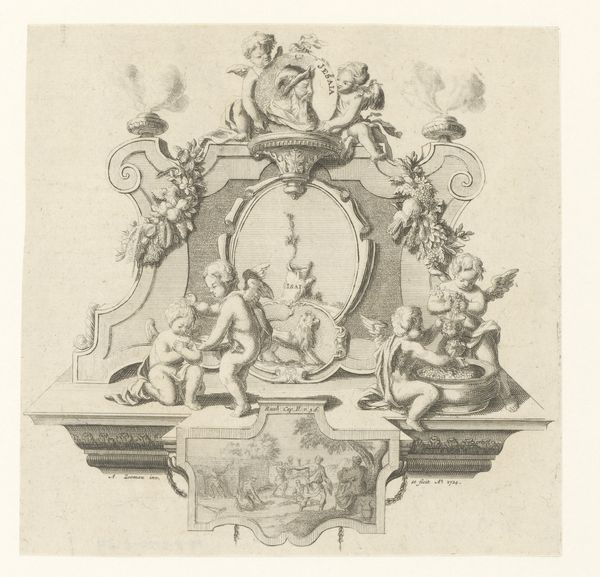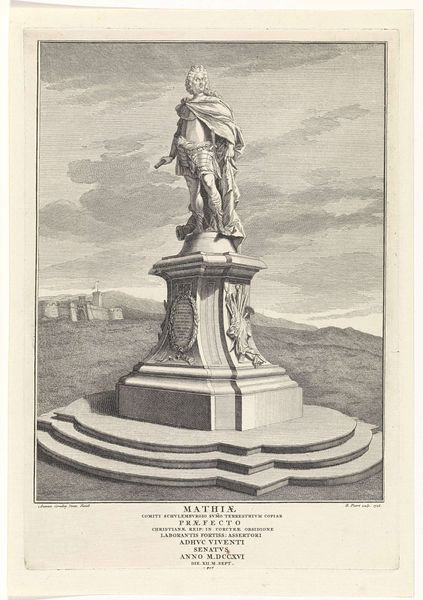
Dimensions: height 357 mm, width 309 mm
Copyright: Rijks Museum: Open Domain
Editor: Here we have Frans Decker's "Ontwerp voor een grafmonument," a design for a tomb, created sometime between 1694 and 1751, rendered in pencil and ink on toned paper. It’s quite an elaborate sketch. The allegorical figures have this mournful, classical grace about them. What jumps out at you when you look at it? Curator: What I find most compelling is the way it reflects the public performance of grief in the Neoclassical period. Tomb design wasn't just about private mourning; it was a statement. What symbols do you notice repeated and what do they mean to you in a historical sense? Editor: Well, you've got the bust at the top, suggesting someone of high status, putti, a skull...the usual memento mori. And the women flanking the base, I presume, are personifications of virtues? How would this monument have functioned politically, say, if it were commissioned for someone controversial? Curator: Precisely. Commissioning such a grandiose monument would have served as a posthumous rehabilitation, perhaps, or a reinforcement of family status regardless of the individual’s life. The inclusion of specific virtues would be a calculated act of public relations, aimed to create a desired legacy. The monument itself becomes a site of power, an attempt to shape the narrative of the deceased. Do you think that practice is over? Editor: Interesting. It really forces you to consider the agency involved, even after death. Though nowadays, with social media, maybe the monument has become less important in shaping one’s narrative... food for thought. Curator: Indeed. These images are documents of the socio-political landscape just as much as the personal. Appreciating this has deepened my understanding of death rituals.
Comments
No comments
Be the first to comment and join the conversation on the ultimate creative platform.
